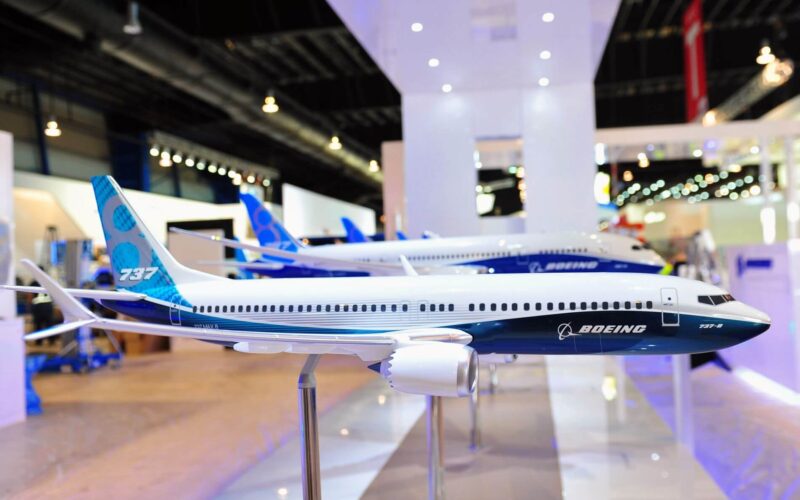What is the difference between Boeing 777-300ER and 787-8? Those numbers, stacked behind the manufacturer’s name, are difficult. So, here are some simple charts to put all the models Boeing is producing into drawers where they belong.
Let’s start from the ones that are currently in production. If you were an airline executive, wanting to create a fleet for your carrier, you would be looking at two main variables: the range (meaning, how far an aircraft can fly), and the capacity (meaning, how much passengers it can carry). Of course, there are other important aspects, such as fuel consumption, turnaround time, upkeep costs and so on, but for the sake of simplicity we will focus on these two, as they are what mostly differentiates models from one another.
Currently, Boeing offers two narrow-body (single-aisle) models, designed to connect destinations relatively close to each other, and carry relatively small amounts of people. Those are 737 NG (with variants 700, 800 and 900) and 737 MAX (variants 7, 8, 9 and 10). Both of them are developed from the base 737 model, and MAX is a modern replacement for NG, but… let’s say, for various reasons Boeing decided to stick with NG production for a while.
Similarly, four wide-body double-aisle models are offered by the company, able to haul large amounts of people over long distances. These are 747, 777, 777 X, and 787 Dreamliner. 777 X (with variants 8 and 9) is a replacement for regular 777, but it is still in development, so you can buy either 777-200LR or 777-300ER from the older generation too. Finally, there is an option to take the vastly upgraded variant of the legendary 747 (747-8 Intercontinental) and Boeing’s latest product – 787 Dreamliner (variants 8, 9 and 10).
If we display ranges and capacities (in the regular two- or three-class configuration) of all these aircraft on a chart, we get several clear clusters: narrow-bodies on the left, with MAX being simply a slightly superior version of NG, and wide-bodies on the right. 787 appears to be aiming to fill the gap slightly, and 777 – to completely surround and replace 747. Hover your mouse or tap each data point to see more details about each model and variant.
Carrying as many passengers as an aircraft can is an important revenue-optimizing measure for an airline, as flying half-empty jets means wasting a lot of money. Therefore, in Boeing’s lineup an airline can find the right tool for each job, that is, for every destination. But what about the range?
Although passenger-wise everything stacks up neatly, range-wise there is a large gap, noticeable in the first chart. If you need something to fly to a destination roughly 7000 to 11000 kilometers (4500 to 7000 miles) away, you have to use longer-range aircraft, which may not be optimized for those distances. Boeing’s current lineup does not have anything to plug that gap.
But that wasn’t always the case. Let’s look at the history of the manufacturer and remember some models that did not have a privilege to remain on sale to this day. Below, production dates of all Boeing’s jet airliners are plotted, with discontinued narrow-body models in lighter gray and wide-body ones in darker gray. Tap or hover over each model to see all the variants that were offered.
Let’s get unimportant things out of the way first. 717 was a regional jet, a rebranding of McDonnell Douglas MD-9, which did not find its place in Boeing’s catalogue and was discontinued soon after the introduction. 707 and 727, Boeing’s first jet airliners, were surpassed by 737 in every single way, and are not really relevant for this story.
But there are two more models, introduced side by side in the late 70s and discontinued in the 2000s, that look like something intended to supplement the small 737 and super-large 747. Putting them alongside all the other variants would result in a mess of data points, so, let’s look at all the models represented by a single, definitive variant.
Lo and behold, 767 and 757 are exactly in the gap between the discontinued legacy models of 737 (200 and 300) and 747 (400). They were designed to fill that gap with similar capacities, but different ranges – be the interim wide-bodies, not exactly jumbo jets, but not narrow-body aircraft too.
(While we are at this chart, take a notice of several outliers: the first generation of 747 (200B), with its relatively short range in comparison to later jumbos, and 787-9: the almost-narrow-body with the range of a wide-body.)
By the way, a lot of 757s and 767s are still operational, filling in their respective gaps at world’s airlines, and there are a lot of people – passengers, pilots and executives alike – who are criticizing Boeing’s decision to discontinue the production of middle-sized aircraft.
So, why Boeing did that? The blue points might offer an answer. Notice the 737 MAX and 787 creeping closer to each other, further from their clusters and into the territory of middle-sized jets. Boeing went on to unify their lineup, offering almost the same ranges and capacities with less models, but more variants. Also, there was this whole story with 757’s successor – Boeing NMA – which did not succeed, but may eventually appear. Will that happen? Will Boeing’s unification strategy pay off? Will we see a comeback of mid-sized jets? Time will tell

